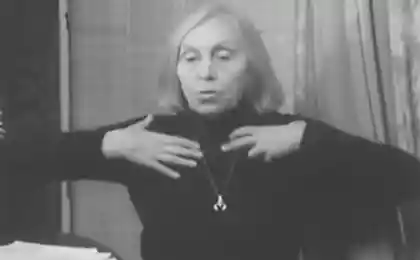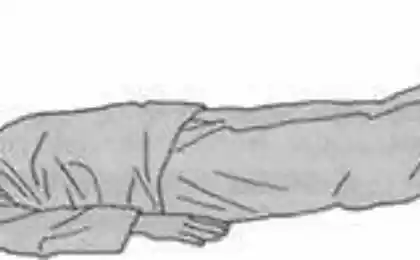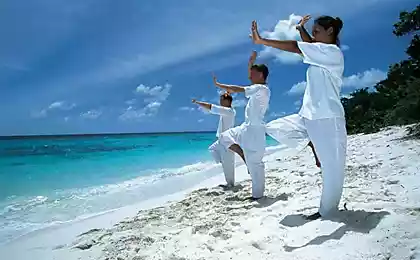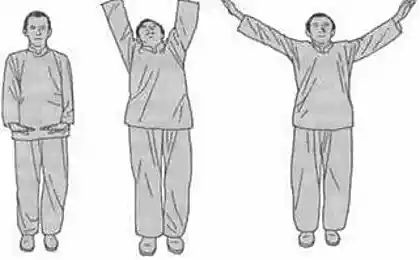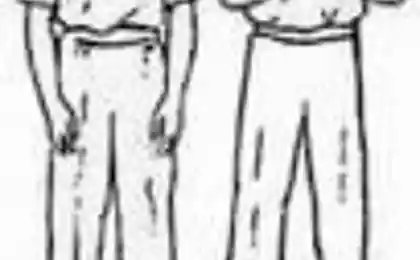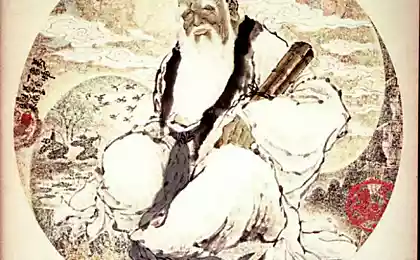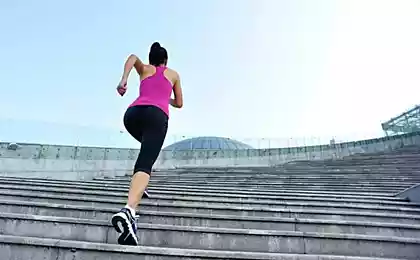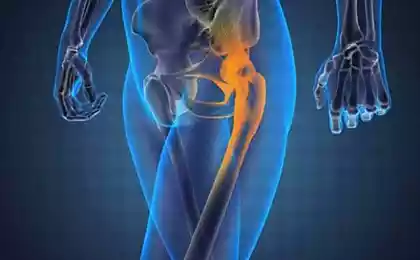482
These exercises are useful in hypertension
Let "water" to "tree"the Effectiveness of qigong therapy in the treatment of hypertension is achieved by immersion into a state of rest, breathing and specific poses that help reduce blood pressure, first, affecting the causes of disease, and secondly, by acting on the physiological mechanisms of the body and, thirdly, through the combination of movement and rest.

1. Practiced for long time immersion in a state of peace, special breathing and postures can be a wonderful stimulus to the body at the micro level, to trigger the conditioned reflex internal inhibition in the cerebral cortex. Because high blood pressure is often a consequence of reaction to adverse external conditions, and treatment, respectively, should be aimed at eliminating the causes of disease. The main principle of this treatment — his conditioned-reflex nature.
2. The causes of hypertension, from the point of view of hemodynamics, is that the terminal increases the resistance of blood vessels, caused, in turn, including the deterioration of their cross. As research shows, for example, primeridian with an emphasis on the exhale enhances the excitability of the parasympathetic nerves and, as consequence, lowering of blood pressure.
3. It is known that during the movement of blood pressure in humans is lower than when it is at rest. Therefore, in the process of qigong therapy of hypertension is very important to skillfully combine movement and stillness, making, however, the emphasis on dynamic exercises and techniques.
There are more suitable tai Chi Chuan, "game of five animals", in combination with the "standing as a post". Mental concentration on the lower parts of the body, or points increases outflow of qi and blood downwards, thereby also decreasing the pressure, improved psychological state, and therefore, eliminated and the inert foci in the cerebral cortex.
According to the theory of traditional Chinese medicine, high blood pressure (hypertension) is the disease caused by "long-term increase of Yang in the liver", the main reasons which are emotional trauma or imbalance of power. The main symptom of hypertension — "the fullness above and emptiness below."With qigong practice this situation can be corrected: remove "weak Yin" to the liver and kidneys, to put "water" to "tree".
To this end, we propose the following methodology:
Qigong exercises for the treatment of hypertension1. First, if condition allows, the lesson is best done in the sitting position, and even better standing, because this body position promotes the flow of qi and blood down to achieve "fullness and emptiness at the bottom at the top".
2. The breathing during the class should be a natural with the accent on the exhale. At the initial stage it is possible to resort to the "breath of peace" characteristic relaxation exercises and then gradually move to breath strengthening exercises. Sufficiently having mastered the second of these methods of breathing, you must adjust to breathing with emphasis on exhalation, which to the maximum extent appropriate for the treatment of high pressure, that is, from a physiological point of view, contributes to its decline. In addition, you can practice slow vybavenie sounds, thereby increasing the excitation of the parasympathetic nerves and lower blood pressure.
No matter what method of breathing you choose, the main requirement is to avoid forcing,to enjoy the freedom of breathing and in any case it is not restrained. In case of any discomfort should be temporarily suspend classes and resume them after the restoration of breathing. Thus, we emphasize again the main thing — to achieve maximum freedom and naturalness of breathing and qi tabyldieva breath came and went like a fine continuous thread, without the slightest "tension".
3. Mental concentration is first directed on the point cihai (area below the navel), and then transferred to point unchuan (mid-soles) or toes.
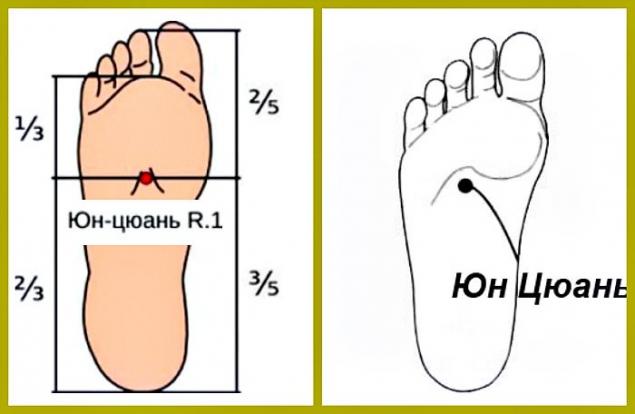
4. Auxiliary exercises:
1. If dizziness, blurred vision, palpitations, or weakness in the legs can be pre-stand up leaning his arms on the tree, mentally focusing on the points junchuang for 15 minutes. This exercise should be performed daily for 4 times.
2. When the state stabiliziruemost can, getting up at 5.00 am to make a twenty-minute slow walk or run simplified complexes of tai Chi, then go to "standing as a post" for 15-20 minutes (natural abdominal breathing and focus on the points junchuan). It is best to do in a forest or grove to face the sun. During the exercise do not face the wind.
3. Quite firmly established, you can take a slow jog around 50-60 meters, followed by a slow walk for the same distance and rest for 15-20 minutes between them, and then run "standing as a post" breathing with emphasis on exhalation. At this stage the exercise is done 4 times a day for 30 minutes or as recommended by your doctor.
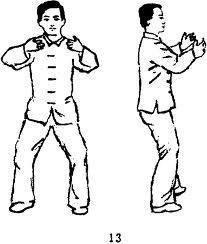
To "clarify" the "three heaters" is "standing as a post" with the breath, with emphasis on vidohe and the mind's focus on points junchuang for 30-45-60 minutes. After this exercise, there comes a feeling of comfort throughout the body, clarity of mind, strength, and stability in the legs.
It means "purging" the "middle heater". Followed by restored cross the entire Meridian. This is evidenced by emerging burp and some weakness in the legs associated with entering through the large toes or point Yunchuan "dirty qi" of the digestive system. The exercise is performed twice a day, morning and evening, or as directed by a physician. published
Author: Wang Li
P. S. And remember, just changing your mind — together we change the world! © econet
Source: //trete-dyhanie.ru/metodika/cigun/gipertoniya

1. Practiced for long time immersion in a state of peace, special breathing and postures can be a wonderful stimulus to the body at the micro level, to trigger the conditioned reflex internal inhibition in the cerebral cortex. Because high blood pressure is often a consequence of reaction to adverse external conditions, and treatment, respectively, should be aimed at eliminating the causes of disease. The main principle of this treatment — his conditioned-reflex nature.
2. The causes of hypertension, from the point of view of hemodynamics, is that the terminal increases the resistance of blood vessels, caused, in turn, including the deterioration of their cross. As research shows, for example, primeridian with an emphasis on the exhale enhances the excitability of the parasympathetic nerves and, as consequence, lowering of blood pressure.
3. It is known that during the movement of blood pressure in humans is lower than when it is at rest. Therefore, in the process of qigong therapy of hypertension is very important to skillfully combine movement and stillness, making, however, the emphasis on dynamic exercises and techniques.
There are more suitable tai Chi Chuan, "game of five animals", in combination with the "standing as a post". Mental concentration on the lower parts of the body, or points increases outflow of qi and blood downwards, thereby also decreasing the pressure, improved psychological state, and therefore, eliminated and the inert foci in the cerebral cortex.
According to the theory of traditional Chinese medicine, high blood pressure (hypertension) is the disease caused by "long-term increase of Yang in the liver", the main reasons which are emotional trauma or imbalance of power. The main symptom of hypertension — "the fullness above and emptiness below."With qigong practice this situation can be corrected: remove "weak Yin" to the liver and kidneys, to put "water" to "tree".
To this end, we propose the following methodology:
Qigong exercises for the treatment of hypertension1. First, if condition allows, the lesson is best done in the sitting position, and even better standing, because this body position promotes the flow of qi and blood down to achieve "fullness and emptiness at the bottom at the top".
2. The breathing during the class should be a natural with the accent on the exhale. At the initial stage it is possible to resort to the "breath of peace" characteristic relaxation exercises and then gradually move to breath strengthening exercises. Sufficiently having mastered the second of these methods of breathing, you must adjust to breathing with emphasis on exhalation, which to the maximum extent appropriate for the treatment of high pressure, that is, from a physiological point of view, contributes to its decline. In addition, you can practice slow vybavenie sounds, thereby increasing the excitation of the parasympathetic nerves and lower blood pressure.
No matter what method of breathing you choose, the main requirement is to avoid forcing,to enjoy the freedom of breathing and in any case it is not restrained. In case of any discomfort should be temporarily suspend classes and resume them after the restoration of breathing. Thus, we emphasize again the main thing — to achieve maximum freedom and naturalness of breathing and qi tabyldieva breath came and went like a fine continuous thread, without the slightest "tension".
3. Mental concentration is first directed on the point cihai (area below the navel), and then transferred to point unchuan (mid-soles) or toes.

4. Auxiliary exercises:
1. If dizziness, blurred vision, palpitations, or weakness in the legs can be pre-stand up leaning his arms on the tree, mentally focusing on the points junchuang for 15 minutes. This exercise should be performed daily for 4 times.
2. When the state stabiliziruemost can, getting up at 5.00 am to make a twenty-minute slow walk or run simplified complexes of tai Chi, then go to "standing as a post" for 15-20 minutes (natural abdominal breathing and focus on the points junchuan). It is best to do in a forest or grove to face the sun. During the exercise do not face the wind.
3. Quite firmly established, you can take a slow jog around 50-60 meters, followed by a slow walk for the same distance and rest for 15-20 minutes between them, and then run "standing as a post" breathing with emphasis on exhalation. At this stage the exercise is done 4 times a day for 30 minutes or as recommended by your doctor.

To "clarify" the "three heaters" is "standing as a post" with the breath, with emphasis on vidohe and the mind's focus on points junchuang for 30-45-60 minutes. After this exercise, there comes a feeling of comfort throughout the body, clarity of mind, strength, and stability in the legs.
It means "purging" the "middle heater". Followed by restored cross the entire Meridian. This is evidenced by emerging burp and some weakness in the legs associated with entering through the large toes or point Yunchuan "dirty qi" of the digestive system. The exercise is performed twice a day, morning and evening, or as directed by a physician. published
Author: Wang Li
P. S. And remember, just changing your mind — together we change the world! © econet
Source: //trete-dyhanie.ru/metodika/cigun/gipertoniya
As you teach the universe: the Rule of 3 signals
Whether or not to give the balloons may 9 veterans?


